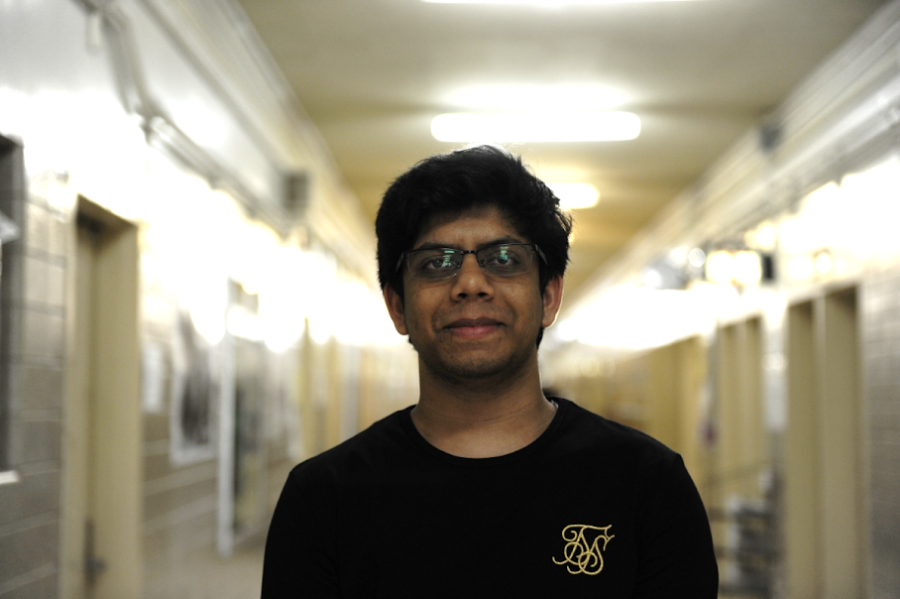Self-Driving Cars
Imtiaz Rahman ’19 believes that self-driving cars have a place in our future, but perhaps they are not for public use.
On March 18, 2018, in Tempe, Arizona, Elaine Herzberg was struck and killed by a self-driving Uber car. She was the first pedestrian on record to be killed by an autonomous vehicle.
The advent of self-driving cars has been coming for years. Many big tech companies such as Tesla have done extensive research on the artificial intelligence required for a car to navigate and make decisions in dangerous situations without need of human intervention. While this technology is still in the works, testing must be done somehow. In the last few years, states have been asked if they would allow the testing of self-driving cars on public roads. This was not only to test, but to help integrate the autonomous vehicles within pedestrian life and to see how the two interacted.
Public testing ended after Herzberg’s accident. It was an Uber operating in self-drive mode and had an employee in the driver’s seat as a safety precaution. According to investigations, the safety driver was not looking at the road before the accident, and no human actions were made to stop the vehicle from moving. Despite the software being up to date and no prior problems with the sensors, the vehicle itself did not attempt to brake. Following the accident, Uber stopped testing self-driving vehicles in all of the cities in which they had been experimenting.
Despite this, self-driving cars are still being modified and tested in synthetic environments with the hope of being reintroduced to public use in the near future. When talking about self-driving cars, Ford automatically comes to mind. However, the technology that goes into making an autonomous car goes beyond just one company. One feature that is in its testing phase is Affectiva’s emotion-sensing software, which would be used to track the driver’s emotional state and warn the car of signs of distress. Then, the car can react accordingly by slowing down or alerting the driver of upcoming obstacles. Such a system could have alerted the safety driver that Herzberg was on the crosswalk and prevented this accident.
While it is easy to start pointing fingers and say that self-driving cars are a danger to humanity, realize that humans are also a danger to themselves. According to The National Highway Traffic Safety Administration, over 37,000 people in the U.S. die in car accidents every year, and the amount of accidents occurring annually is only increasing as more cars get on the road. Even the safest of drivers are estimated to get into at least three or four crashes within their lifetime. Over 28% of fatal car accidents in the U.S. are alcohol-related, showing that even before some people start their engines, they have already made a dangerous mistake.
While this one self-driving Uber crash is significant because it shows that there are still flaws in the technology, research on self-driving cars should not end just yet. If anything, continued research towards the goal of creating safe autonomous cars should be encouraged. There is potential for these vehicles besides the vision of them being used as public transport.
“Self-driving cars bring many questions as to how the justice system should work if accidents are to occur,” said Imtiaz Rahman ’19.
“Self driving cars have the most potential for doing work in companies and business sectors, but not for public consumption, at least not yet,” said Imtiaz Rahman ’19. There are issues with introducing this technology to public use. “Self-driving cars bring many questions as to how the justice system should work if accidents are to occur. Beyond that, there’s also moral and ethical issues with the decisions these cars may make and if that cannot be attributed to the driver themselves, there are just too many issues to be involved.”
People naturally fear the new technology, and have ethical questions such as, “Why should people in their city be part of an experiment that puts others in danger?” However, the reality is that these self-driving cars are already safer, statistically speaking, than the average American driver. If people want safer autonomous vehicles, there must be a time for live testing.
Having these cars doing practice runs in a synthetic environment does not do them any good. Artificial environments do not reflect how a machine will function in real life situations. Although, live testing has been halted in the cities it once was permitted in, several Connecticut municipalities have become candidates for allowing these cars to be tested in the near future. No matter any individual’s stance, these cars may play an integral role in everyone’s future lifestyles, and it is best to prepare for it.
Jason Cheung is a News Section Editor for ‘The Science Survey’ and a People Section Reporter for ‘The Observatory.’ He enjoys doing journalistic...











